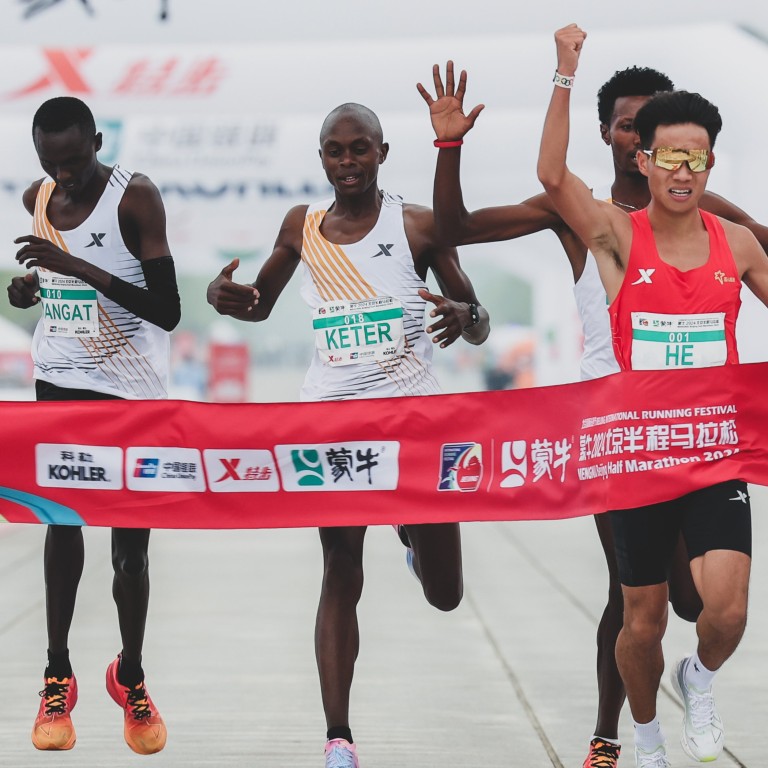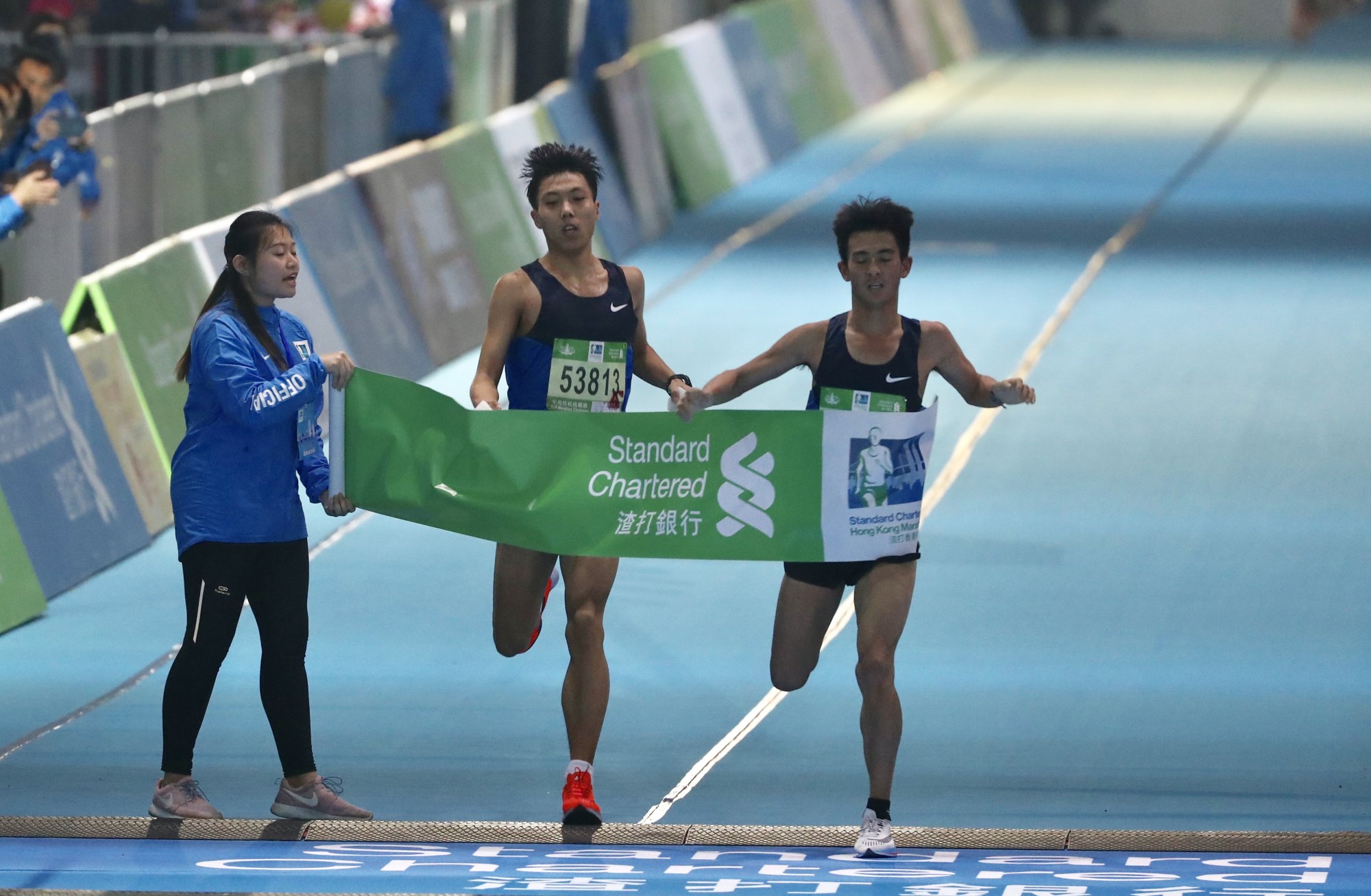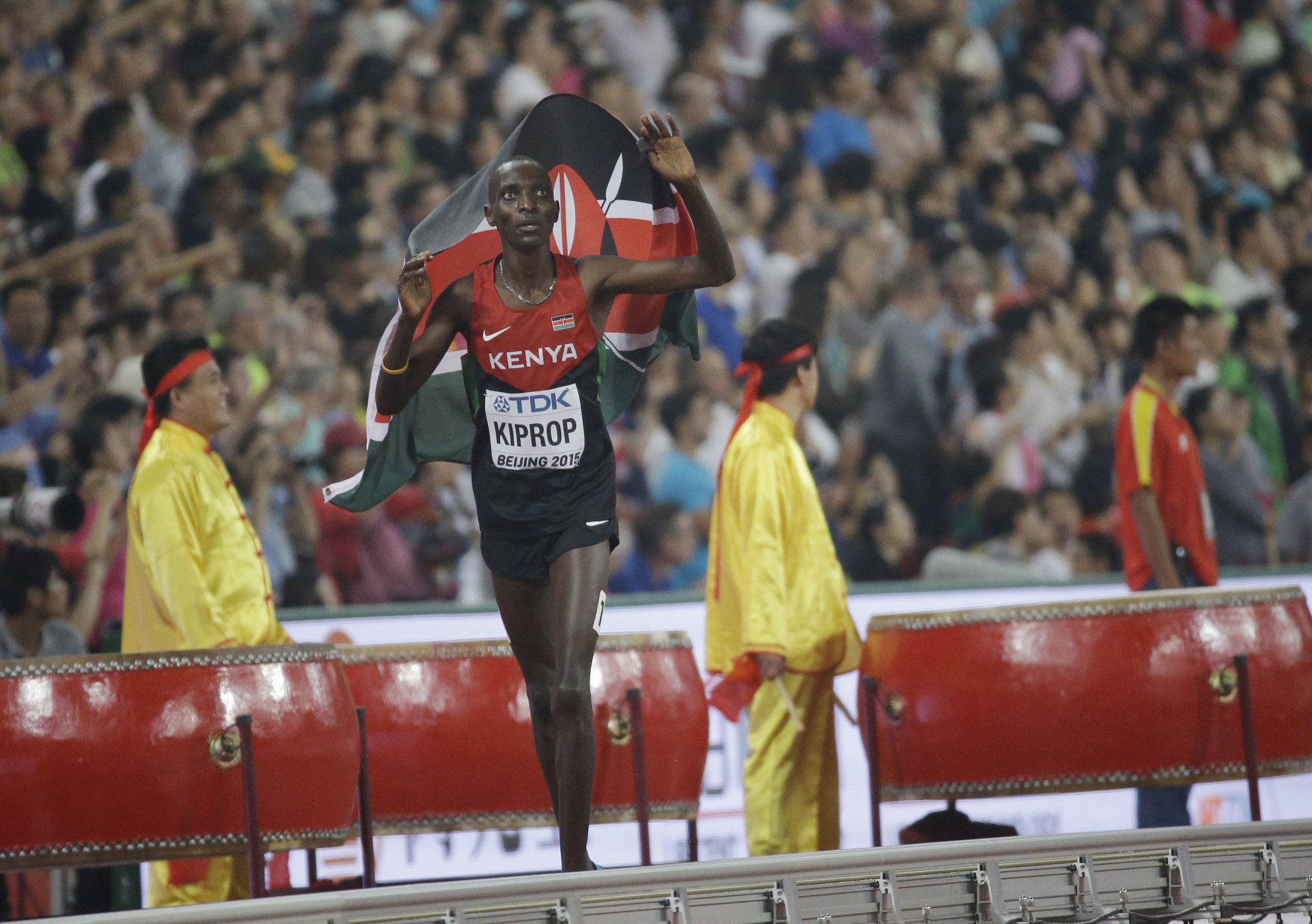
Was 2019 Beijing Half Marathon also fixed? Video raises questions, sparks doubt over every result, China sports expert says
- The end of Sunday’s Beijing Half Marathon race showed three African runners allowing Asian Games winner He Jie to cross the line first
- A video of the 2019 half marathon shows two Kenyan runners being passed by China’s Liu Hongliang
A video of the end of the 2019 Beijing Half Marathon shows striking similarities to last weekend’s controversial race, leading a Chinese sports expert to say it called into question every previous result.
Sunday’s Mengniu Beijing Half Marathon finished with two Kenyans, Willy Mnangat and Robert Keter, and Ethiopian runner Dejene Hailu Bikila seemingly waving Asian Games marathon gold medallist He Jie through to cross the line first unchallenged.
The result has been questioned widely in China and abroad, and the Beijing Municipal Bureau of Sports and the organisers have launched an investigation.
Footage of the 2019 edition shows two Kenyan runners, Silas Kimeli Too and Daniel Kiprop, in first and second place, respectively, with China’s Liu Hongliang behind them in third.
With just a couple of kilometres of the race left, Liu overtakes the pair for the first time.
After overtaking Too, Liu turns his head to look at him and can be seen putting his right hand behind his back and making a sign with two fingers.
Too remained close behind Liu for the remaining five minutes of the 21km race. Liu completed the race in 1:05:24, two seconds faster than Too.
Too, Mnangat and Keter are represented by the same agent, a Chinese woman called Lin Lin.
The three runners were wearing race bibs and their clothes, as with Sunday’s event, did not identify them as pacers.

In 2018, Liu placed second in the Standard Chartered Hong Kong Half Marathon.
“It looks like what happened this year,” said Chinese sports expert Mark Dreyer after watching the video.
Following Sunday’s race, Mnangat initially said he let the Chinese athlete win, then claimed he had been hired as a pacemaker and did not know why the organisers did not give him a pacer’s bib.
“From those comments it seems like they were all hired as pacemakers, right? But someone didn’t declare it, which is kind of [underhanded in] nature,” Dreyer said.
In both the 2019 and 2024 races, organisers at the finish line put second- and third-place markers on the African runners, suggesting they also thought they were athletes.
“If someone else has decided that they’re going to hire them as pacers but sign them up as runners, then you have to start questioning, why have they done that,” Dreyer said.
There is a need for agents and the agents need to get paid, but you can see how there is a potential for shadiness
Dreyer suggested several reasons, including trying to make the Chinese athletes look better.
“For the sponsor, it’s great – a Chinese athlete beats elite runners from Africa,” he said.
Dreyer also said agencies could be keeping the prize money for second- and third-placed finishers, but paying the athletes a pacer’s fee.
“There is a need for agents and the agents need to get paid, but you can see how there is a potential for shadiness,” Dreyer added.
The Post has approached World Athletics and the Beijing Municipal Bureau of Sports for further comment, but has not been able to contact Too and Kiprop.
Organisers of the Beijing Half Marathon, Lin and staff at Flying Sports, the agency she manages, have ignored repeated requests to speak to the Post.
However, the agency’s co-manager, He Yingqiang, is quoted in an article with Chinese sports media outlet Sina and goes into detail about what he and his partner, Lin, do.
According to the article, in 2021 Flying Sports was the only brokerage company in China licensed by World Athletics and was one of the few agencies arranging international travel to the country for athletes.
Flying Sports also provides technical guidance to organising committees that need to achieve World Athletic event accreditation, according to He Yingqiang.
Although He Yingqiang did not mention how much of a cut from the prize money his company takes, he said elite athletes who come to China and run a marathon in less than two hours and 10 minutes could earn US$5,000 (HK$39,000).
“Because of the dirty history of some agents in China not paying [athletes], athletic associations of several major African distance-running powerhouses are now refusing to allow Chinese agents to legally broker their athletes and enter the industry,” He Yingqiang said.
Flying Sports represents at least 32 elite runners, including Kenyan Asbel Kiprop, who won gold in the 2008 Olympics in the 1,500 metres, and France’s Morhad Amdouni, the 2018 European 10,000m champion.

The number of road-running events in China soared from 51 in 2014 to 1,828 in 2019, including 24 events certified by World Athletics.
On Tuesday, the Chinese Athletics Association acknowledged that the marathon running boom in the country had created problems.
“Since the spring of 2024, road-running events have been held across the country and people are enthusiastic about participating,” the association said.“Overall, the events have been running smoothly.
“But they have also exposed problems in event organisation and management, which have aroused widespread social concern.”
It added: “The meeting [held after news of the marathon broke] pointed out that the Chinese Athletics Association will further strengthen guidance and supervision of road-running events.”

